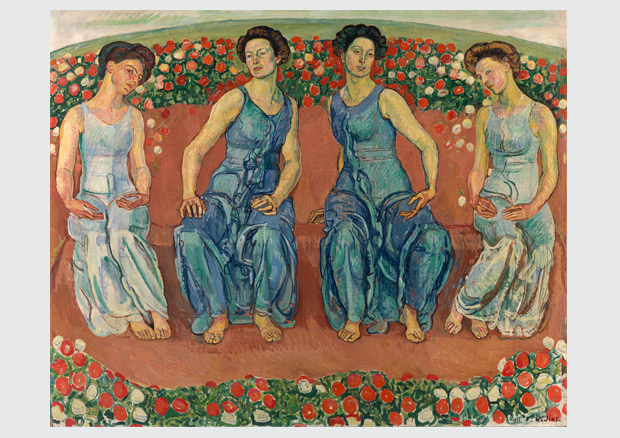Kunstmuseum Bern
Image may be NSFW.
Clik here to view.
Ferdinand Hodler, was already in his lifetime internationally famous. For his theory of parallelism he drew on a concept that was widespread in various sciences in the nineteenth century. Based on his own observations – for example of trees lining a road, a rockslide, clouds, or mountains mirrored in a lake – he made parallelism the determining principle of his work, implementing it in the compositional structures of repetition, symmetry, or mirror images:
The Kunstmuseum Bern and the Musées d’art et d’histoire de Genève are indebted to numerous Swiss institutions as well as private sponsors for their generous support. A richly illustrated catalogue will be published for the exhibition and contains scholarly contributions from leading experts in the field.
Curators
Nina Zimmer, Kunstmuseum Bern – Zentrum Paul Klee
Laurence Madeline, Paris
Muchmore infoandmany images: http://www.musee-orsay.fr/en/events/exhibitions/archives/exhibitions-archives/browse/6/page/0/article/ferdinand-hodler-7814.html?cHash=9d8469fc8b
To commemorate the centenary of the death of Ferdinand Hodler, the Kunstmuseum Bern is – jointly with the Musées d’art et d’histoire de Genève – mounting a large special exhibition. The show presents the work of this famous Swiss artist from a new perspective: from that of his theory of parallelism.
Image may be NSFW.
Clik here to view.
In 1897, Hodler stated in his lecture on the goal of artists that «it is the quest of the artist to express the eternal element of nature and beauty, and reveal its essential beauty». In the lecture he explains his perception of the world and makes this understanding the fundamental idea behind his oeuvre. With «beauty» he actually meant an order intrinsic to nature, one of the repetition of forms and colours. In his eyes this phenomenon excited the pleasing effect of unity in the attentive beholder. Hodler believed that it presented a universal law, which he called parallelism, and dedicated himself to making it visible in his art.Image may be NSFW.
Clik here to view.

Image may be NSFW.
Clik here to view.

Ferdinand Hodler, was already in his lifetime internationally famous. For his theory of parallelism he drew on a concept that was widespread in various sciences in the nineteenth century. Based on his own observations – for example of trees lining a road, a rockslide, clouds, or mountains mirrored in a lake – he made parallelism the determining principle of his work, implementing it in the compositional structures of repetition, symmetry, or mirror images:
«The success or failure of my work depends wholly on whether my parallelism is true or not. Parallelism is, as I discovered it, described it, and employ it, either a universal law and is universally valid – and then my work has universal meaning – or I was wrong, and then my art is nothing but delusion and misconception. »The exhibition at the Kunstmuseum Bern makes it possible to view Ferdinand Hodler’s work and his distinctive visual imagery in a new light by revealing the synthesis of his artistic work and his writings outlining his artistic ambitions. The show addresses Hodler’s theory and how he visually put it into practice in ten sections, each focusing on different bodies of works and motifs.
The Kunstmuseum Bern and the Musées d’art et d’histoire de Genève are indebted to numerous Swiss institutions as well as private sponsors for their generous support. A richly illustrated catalogue will be published for the exhibition and contains scholarly contributions from leading experts in the field.
Curators
Nina Zimmer, Kunstmuseum Bern – Zentrum Paul Klee
Laurence Madeline, Paris
Muchmore infoandmany images: http://www.musee-orsay.fr/en/events/exhibitions/archives/exhibitions-archives/browse/6/page/0/article/ferdinand-hodler-7814.html?cHash=9d8469fc8b

